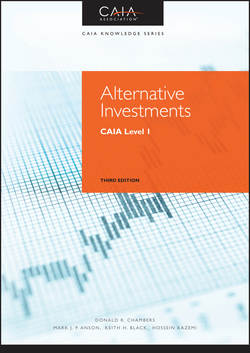Читать книгу Alternative Investments - Hossein Kazemi - Страница 29
На сайте Литреса книга снята с продажи.
PART One
Introduction to Alternative Investments
CHAPTER 2
The Environment of Alternative Investments
2.1 The Participants
2.1.2 The Sell Side
ОглавлениеIn contrast to buy-side institutions, sell-side institutions, such as large dealer banks, act as agents for investors when they trade securities. Sell-side institutions make their research available to their clients and are more focused on facilitating transactions than on managing money.
LARGE DEALER BANKS: Large dealer banks are major financial institutions, such as Goldman Sachs, Deutsche Bank, and the Barclays Group, that deal in securities and derivatives. Although based on the same economic principles as typical retail banks, large dealer banks are much bigger and more complex. The macroeconomic impact of a large dealer bank failure may be more widespread because of the central role this type of bank plays in the economic system at large. Generally, most large dealer banks act as intermediaries in the markets for securities, repurchase agreements, securities lending, and over-the-counter (OTC) derivatives. In addition, large dealer banks are often engaged in proprietary trading and brokering hedge funds.
Large dealer banks also have large asset management divisions that cater to the investment management needs of institutional and wealthy individual clients. This involves custody of securities, cash management, brokerage, and investment in alternative investment vehicles, such as hedge funds and private equity partnerships that are then managed by the same banks. Some of these types of banks operate internal hedge funds and take on private equity partnerships as part of their business management service. In this role, the bank acts as a general partner with limited-partner clients.
The role of dealer banks in the primary market is to intermediate between issuers and investors, to provide liquidity, and to act as underwriters of investments. In secondary securities markets, large dealer banks trade with one another and with brokers/dealers directly over the computer or the phone, as well as play an intermediating role of facilitating trades.
Large dealer banks also engage in proprietary trading. Proprietary trading occurs when a firm trades securities with its own money in order to make a profit. Large dealer banks serve as counterparties to OTC derivatives such as options, forwards, and swaps that require the participation of a counterparty dealer who meets customer demand by taking the opposite side of a desired position. Dealers may accept the risk or use a matched book dealer operation, in which the dealer lays off the derivative risk by taking an offsetting position.
As part of their business management activities, large dealer banks are active as prime brokers that offer professional services specifically to hedge funds and other large institutional customers. (Prime brokers are discussed in more detail in section 2.1.3.) Several large dealer banks have ventured into off-balance-sheet financing methods, a practice that involves a form of accounting in which large expenditures are kept off the company's balance sheet through various classification methods. Companies use off-balance-sheet financing to keep their debt-to-equity and leverage ratios low.
In addition to their special role in the financial system, large dealer banks share many of the same responsibilities as conventional commercial banks, including deposit taking and lending to corporations and consumers.
BROKERS: Also on the sell side are retail brokers that receive commissions for executing transactions and that have research departments that make investment recommendations. Advantages of using brokers include their expertise in the trading process, their access to other traders and exchanges, and their ability to facilitate clearance and settlement. Because brokers play the role of middlemen in the trading process, traders can use broker services when they want to remain anonymous to other traders. Typically, traders can manage their order exposure by breaking up large trades and distributing them to different brokers or by asking a single broker in charge of the entire trade to expose only parts of the order, so that the full size remains unknown to other traders. Brokers also often represent limit orders for clients (i.e., orders placed with a brokerage to buy or sell shares at a specified price or better). In this event, brokers monitor the markets on behalf of their clients and make decisions based on client limit and stop orders when the markets change.
The brokerage firm's proprietary trading operations involve the firm's own account, called the house account. Other sources of broker revenue include soft commissions, payments for order flow, interest on margin loans, short interest rebates (on short sales), underwriting fees when the firm helps clients sell securities, and mergers and acquisitions (M&A) fees. The major cost of running a brokerage firm is labor: the brokers and other employees who provide the firm's services to clients.
Brokerage firms and other firms with major investment activities organize their activities into three major operations: (1) front office, (2) back office, and (3) middle office. Front office operations involve investment decision-making and, in the case of brokerage firms, contact with clients. Back office operations play a supportive role in the maintenance of accounts and information systems used to transmit important market and trader information in all trading transactions, as well as in the clearance and settlement of the trades. Middle office operations form the interface between the front office and the back office, with a focus on risk management.
